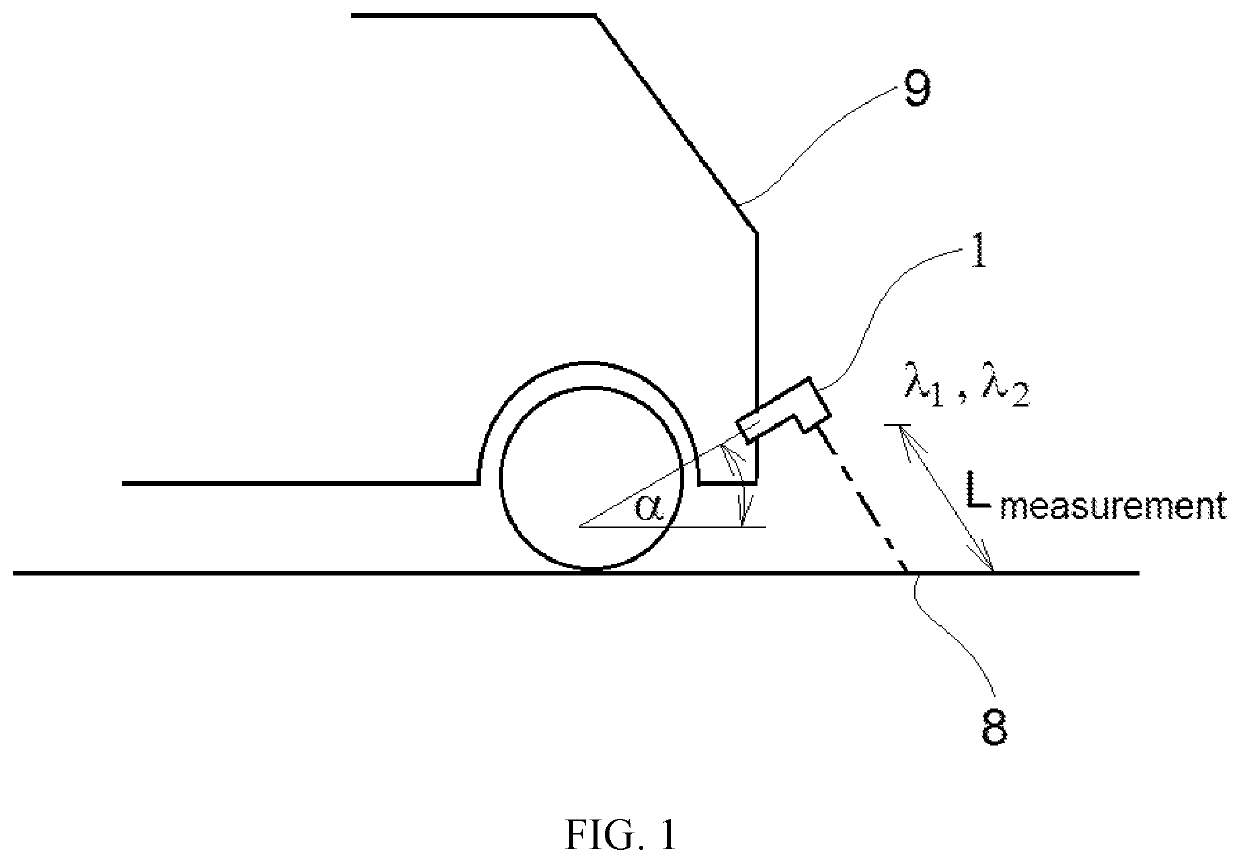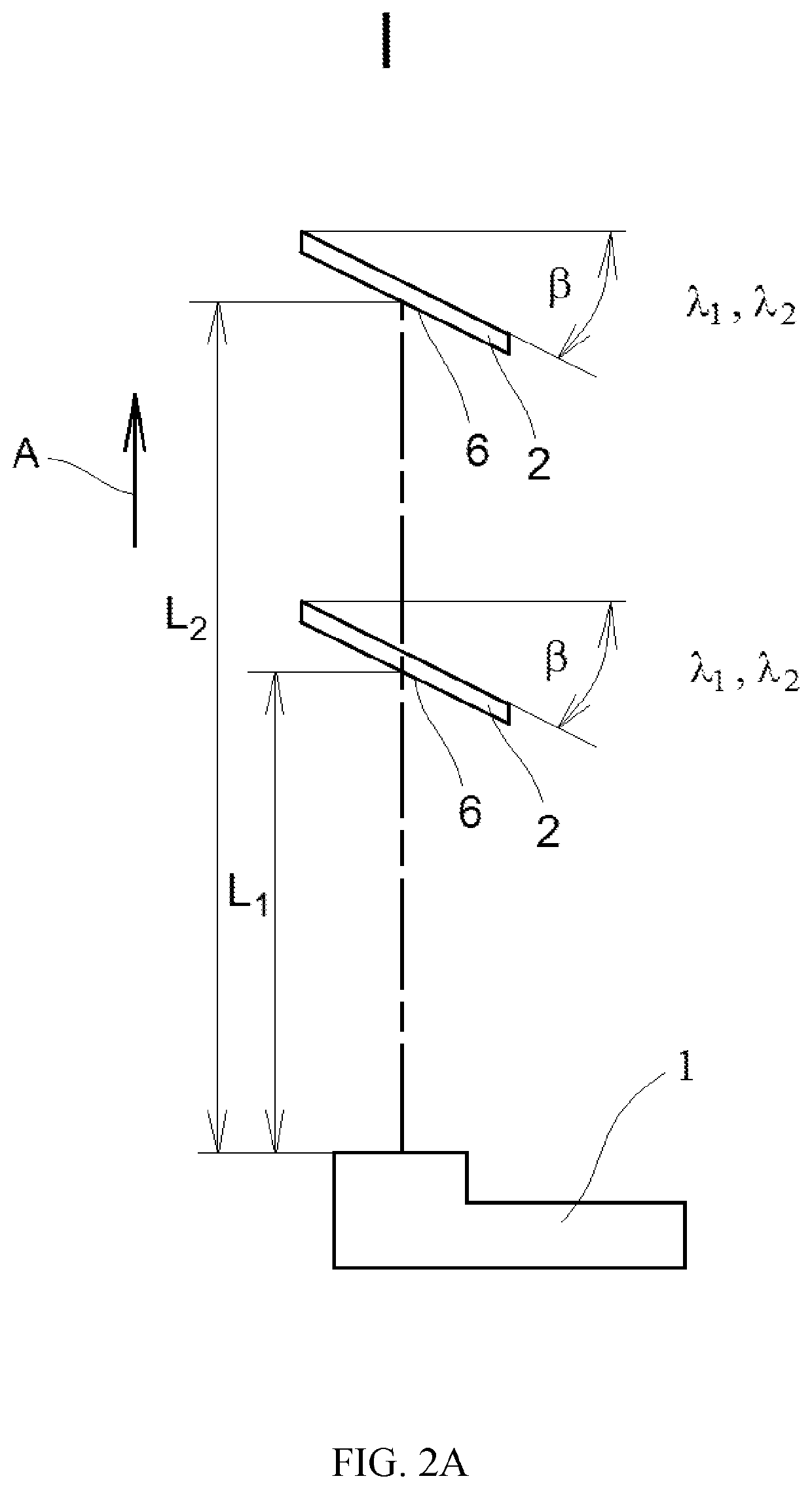Method of calibrating an optical surface condition monitoring system, arrangement, apparatus and computer readable memory
a condition monitoring and optical surface technology, applied in the direction of optical radiation measurement, instruments, spectrometry/spectrophotometry/monochromators, etc., can solve problems such as performance problems, dry road surfaces are likely very difficult to find, and measurement errors
- Summary
- Abstract
- Description
- Claims
- Application Information
AI Technical Summary
Benefits of technology
Problems solved by technology
Method used
Image
Examples
Embodiment Construction
[0074]In this document the expressions “target material”, “reference material” and “sample material” are being used. The expression “target material” means a material of a surface to be monitored, for example the material of a road. The expression “reference material” means a material used in connection with calibration of the optical surface condition monitoring system as e.g. disclosed in connection with FIG. 2A. The material of the reference material and the material of the target material are typically different from each other. The expression “sample material” means a material used in connection with calibration of the optical surface condition monitoring system as e.g. disclosed in connection with FIG. 2B. Typically, a plurality of sample materials is used, for example old asphalt, new asphalt, etc.
[0075]In FIG. 1 a schematic view of a commercially available optical surface condition monitoring system 1 is illustrated, wherein the optical surface condition monitoring system 1 ...
PUM
 Login to View More
Login to View More Abstract
Description
Claims
Application Information
 Login to View More
Login to View More - R&D
- Intellectual Property
- Life Sciences
- Materials
- Tech Scout
- Unparalleled Data Quality
- Higher Quality Content
- 60% Fewer Hallucinations
Browse by: Latest US Patents, China's latest patents, Technical Efficacy Thesaurus, Application Domain, Technology Topic, Popular Technical Reports.
© 2025 PatSnap. All rights reserved.Legal|Privacy policy|Modern Slavery Act Transparency Statement|Sitemap|About US| Contact US: help@patsnap.com



